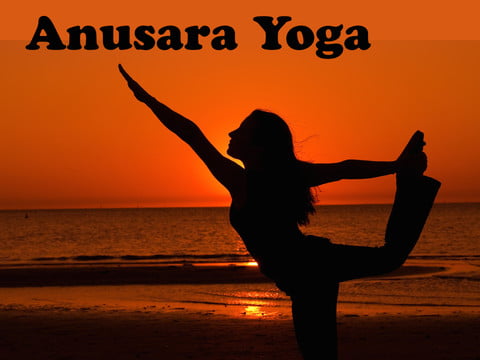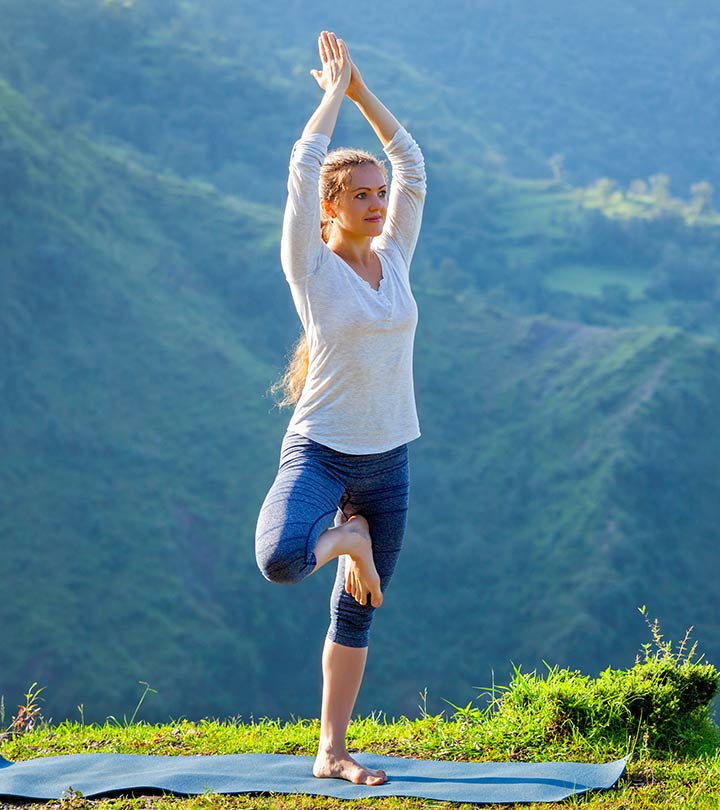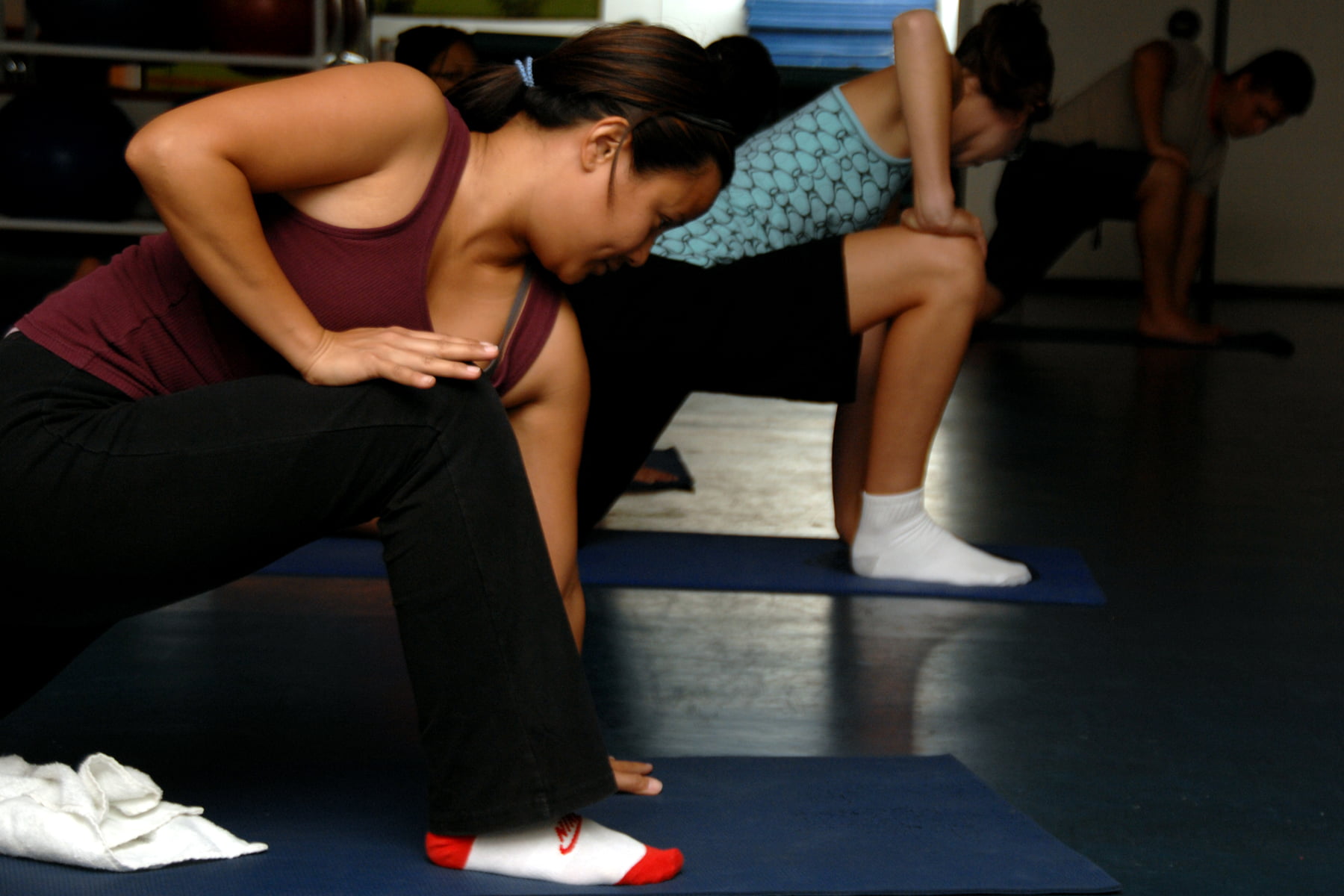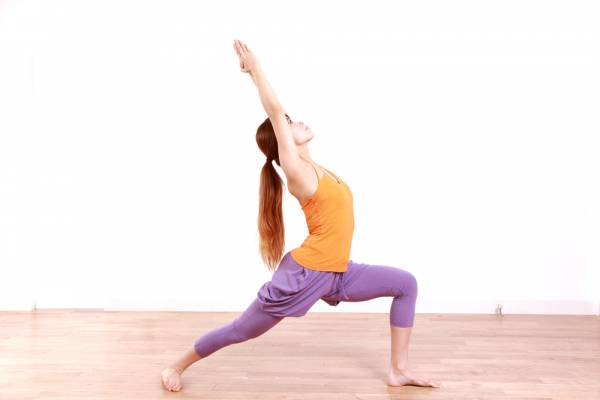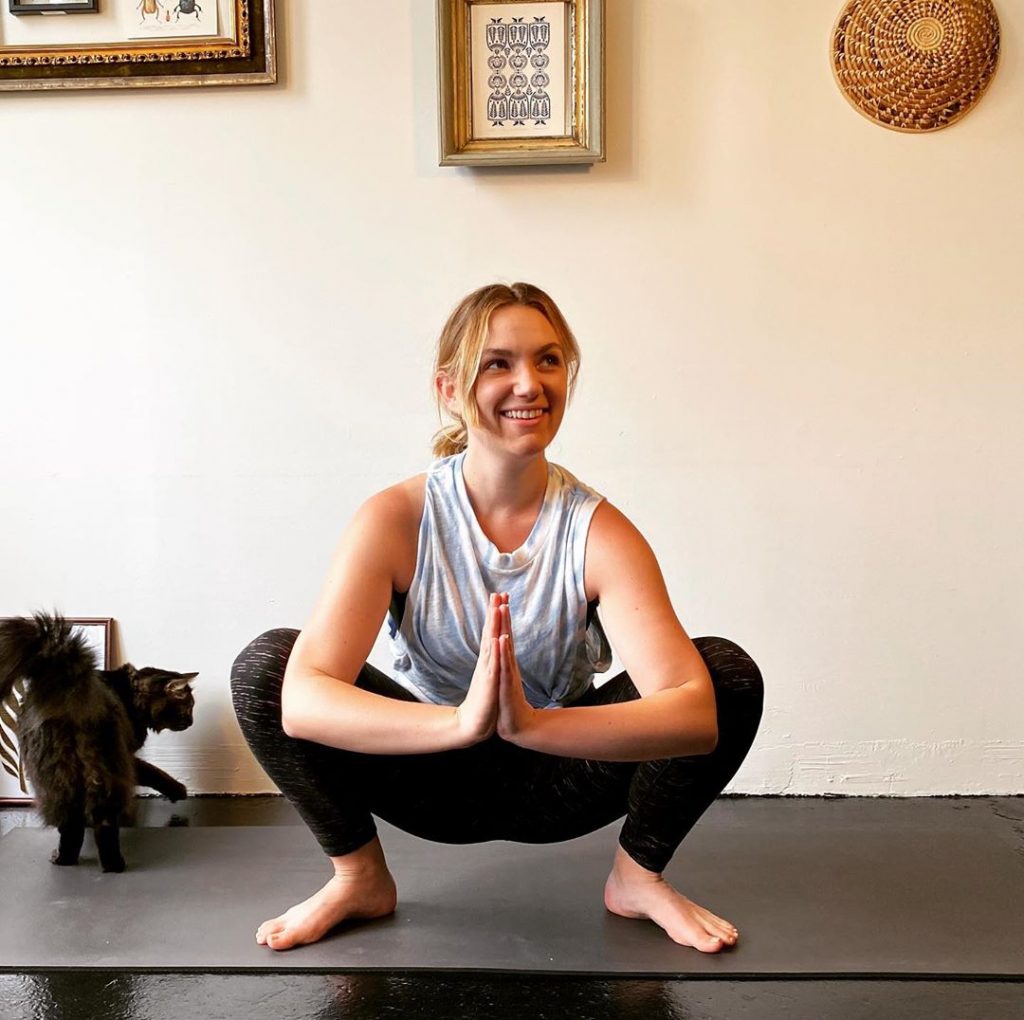
Malasana is also known as the Garland poses in English. With the practice of this asana, you will get relief from back pain. Not only that but the fat will also be reduced from your thighs and stomach. There are countless Malasana benefits if you can practice this asana regularly. Regularity can bring a handful of Malasana benefits that you can’t even think of.
Today, let’s talk about the Malasana benefits and the steps, precautions, and all the other details regarding the Malasana yoga squat or the Garland Pose in this article below:
NOTE:
The Malasana or the Garland Pose helps to stretch the groins, back, and ankles.
Table of Contents
What Is Malasana Or the Garland Pose?
Yoga Malasana is also known as the “Upavesasana” the “Squat Pose” or “Garland Pose”. The word Malasana is originally taken from two Sanskrit words, where “Mala” means ‘Garland’ or ‘Necklace’ or ‘Rosary’, and “Asana” means ‘Pose’. Malasana is generally pronounced as “maa-laa-sa-na”.
Malasana yoga pose is simply a squat. Kids and individuals who generally work and play in the fields practice the Malasana squats. However, those working in an office i.e. desk jobs are away from the practice of squatting and thus find Malasana squats uncomfortable and painful to perform.
Whatsoever do not get disappointed and stop practicing Malasana squats because Malasana benefits are many; especially Malasana or the Garland Pose is very beneficial to those individuals who lead a sedentary lifestyle.
NOTE:
Malasana Style: One Type of Hatha Yoga
Malasana Level: Easy or Basic
Malasana Duration: 36 to 60 seconds
Malasana Strengthens: Digestive system, Hips, & Lower back
Malasana Stretches: Hamstrings, Thighs, Lower back, Groin
Why Does One Need To Practice Malasana Squats Or Garland Pose?
Malasana squatting was generally a usual pose for our ancestors. Over their normal practice of squats and daily routine, they were contented with keeping their upper legs and torso hinged at a 160° angle.
At the present time, many of us have to sit in cars or chairs all day long. Consequently, we are more relaxed having the body set at a 90° angle rather than a 160° angle.
Therefore, we slouch and we sit; slowly, but certainly, losing our mobility in our back and hips. Unknowingly, our pose is bringing a wide range of strength and health problems in life.
Fortunately, common practices of the Malasana squats keep our joints healthy for the long term.
What Are The Preparatory Poses Of Malasana Or The Garland Pose?
These are the preparatory poses of Malasana. Practice these preparatory poses to get the most Malasana benefits:
- Upavistha Konasana (उपविष्ठ कोणासन) Or The Wide-Angle Seated Forward Bend Pose
- Baddha Konasana (बद्धकोणासन) Or The Cobbler Pose or Butterfly Pose
- Virasana (वीरासन) Or The Hero Pose
How To Practice The Malasana Pose Or The Garland Pose?
Malasana is basically a squat pose. It is very simple if you follow the step-by-step instructions for the Malasana steps carefully. Let’s check out the Malasana pose steps below.
Instructions To Malasana Steps:
- To Do the Malasana pose, begin with a low squat form with the feet as adjacent together as probable
- Try to keep the feet flat on the floor (You can also take a yoga block or a folded yoga mat to comfortably touch the ground with your feet
- Spread the thighs as wider as possible or just wider than the torso so that you can bend forward to bring the torso between the thighs
- Place both palms together in front of your chest in a prayer position
- Exhale to develop into the pose
- Press the elbows against the inner shins or knees to create confrontation between the elbows and your inner legs
- Lengthen your torso at the front while you squeeze the inner thighs into each other
- Take a twist if you wish to transfer deeper
- You can also spread your hands backward and hold onto or just you’re your hands under the heels to improve the posture
- Hold on to this position at least for 30 to 60 seconds or as per your capability
- Slowly get back to your previous position and then relax for some time.
Tips For Beginners On The Malasana Pose:
If Malasana squatting seems to be difficult for you then do this:
- Sit on the front edge of the chair and form a right angle with your thighs to your torso
- Place the feet on the ground faintly ahead of the knees
- Bend forward from the torso between your thighs
If you want to do the asana on the floor but are unable to reach the floor with the heels then do not force too much, instead of forcing rest your heels on a yoga block or on a folded yoga blanket.
What Are The Follow-Up Poses Of the Malasana Pose?
Here are the follow-up poses of the Malasana pose. Check out the follow-up poses of the Malasana steps:
- Bhujangasana (भुजङ्गासन) Or The Cobra Pose
- Adho Mukha Svanasana (अधोमुखश्वानासन) Or The Downward-Facing Dog Pose, Down Dog, Or Downward Dog
- Uttanasana (उत्तानासन) Or The Intense Forward-Bending Pose OR Standing Forward Bend OR Standing Head to Knees Pose OR Standing Forward Fold Pose OR Intense Stretch Pose
Contraindications & Cautions Of The Malasana Pose?
These are the cautions you need to know before practicing the Malasana pose to get the most Malasana benefits.
- If you have lower back pain or injury in your lower back then do not practice the Malasana pose.
- If you have knee pain or injury in your knee then maintain a distance from the Malasana pose.
What Are The Malasana Benefits?
These are the Malasana benefits that you get from the regular practice of this asana. Check out the benefits of Malasana below:
Malasana Benefits For Flexibility:
Malasana benefits give the sacrum, lower back, hips, and groin a good stretch while performing the posture. Consequently, it brings flexibility to these areas and provides relief from problems related to these areas.
Malasana Benefits Instigates Metabolism
As the Malasana involves many stretches, regular practice of this asana can help weight loss and instigate the metabolism.
Malasana Benefits For Better Digestive System:
Malasana benefits activate the digestive system by creating a stretch in the abdominal area and on the stomach. It improves the blood flow in the stomach and improves the digestive system to a great extent.
Malasana Benefits For A Toned Belly:
The regular practice of Malasana allows us to achieve a flat and toned belly. So for a toned belly, you do not have to go to the gym, just practice Malasana regularly to see the changes within weeks.
Other Malasana Benefits:
- Malasana benefits improve the posture
- Malasana benefits increase flexibility in the knees and ankles.
- Malasana benefits open the groin and hips
- Malasana benefits keep the hip joints and pelvis healthy
- Malasana is ideal for the prenatal yoga
Malasana Variations:
There is a total of 4 Malasana variations. Know all these yoga squat variations to get the full Malasana benefits. Here we go…
Malasana I or The Kanchyasana
This one is the first variation of the Malasana. Here your feet are together with your arms wrapped around your back, and at the same time, your chin touches the ground. When your arms are bent behind, this yoga asana is called “Kanchyasana” or the “golden belt pose”.
Malasana II
This one is the second variation of the Malasana. In this asana, your hands are wrapped around your heels and thus touch the ground with your chin.
Bhujapidasana
The term Malasana is also well-known in the “Sritattvanidhi” to define the Bhujapidasana (भुजपीडासन) or the “Shoulder Press Pose”, where our hands are sited at the bottom, balancing the body on our hands, and our legs resting on our shoulders.
Step By Step Instructions to Do Bhujapidasana:
- Sit in a squat position
- Place the palms on the ground (either between the thighs or over the thighs and knees)
- Crossing the legs slowly try to lift the whole body from the ground (shown in the picture)
- Hold on to this position for 15 to 20 seconds
- Slowly down the body and then relax for some time.
Upavesasana
Here the term Malasana is usually used in the West for the term “regular squat pose,” it is also called “Upavesasana”, where the palms are folded together in a prayer posture nearer to your chest, and your feet are set apart (wider).
Philosophy & Origin Of The Malasana:
There are a lot of attempts at the translation of the Malasana as the “Garland Pose.” Where mala is most frequently referred to as a rosary or a garland or a necklace, many learners have difficulty understanding how the imaginings apply to this yoga pose.
Some instructors say that the outline of our body portrays the bead of a mala, or possibly our arms appear like a garland i.e. mala hanging from our neck.
Other instructors say that story this posture is conventionally taken while receiving a gift or a garland from a divine person.
An interesting yet lesser-known aspect of the yoga squat, Malasana, sheds more light on its significance. The term “Mala” translates to excrement. Considering the pose’s digestive benefits, this interpretation seems fitting, doesn’t it?
FAQ:
Check out the most commonly asked question regarding the Malasana or the Garland Pose below.
Q. Is Malasana Helpful For Weight Loss?
A. YES…Malasana indeed is effective in losing weight, especially this asana works best for a toned belly, Practice this asana to get a toned belly.
Q. What Malasana Means?
A. ‘Mala’ means Garland or Rosary or necklace and ‘Asana’ means Yoga pose. So Malasana means Garland Pose.
Q. What is the best time to do Malasana?
A. The best time to practice Malasana is the early morning. It is better to practice on an empty stomach.
Q. Is The Asana Effective for Knee and Back Pain?
A. Of course, it gives relief from knee pain and back pain.
Q. When is the best time to practice the Malasana?
A. Dawn is the best time to practice the Malasana as at that point in time we can practice the asana on an empty stomach.
Q. What are the preparatory poses of Malasana?
A. The preparatory poses of the Malasana are as follow:
-
- Upavistha Konasana (उपविष्ठ कोणासन) Or The Wide-Angle Seated Forward Bend Pose
- Baddha Konasana (बद्धकोणासन) Or The Cobbler Pose or Butterfly Pose
- Virasana (वीरासन) Or The Hero Pose
Q. What are the follow-up poses of Malasana?
A. The follow-up poses of the Malasana are as follow:
-
- Bhujangasana (भुजङ्गासन) Or The Cobra Pose
- Adho Mukha Svanasana (अधोमुखश्वानासन) Or The Downward-Facing Dog Pose, Down Dog, Or Downward Dog
- Uttanasana (उत्तानासन) Or The Intense Forward-Bending Pose OR Standing Forward Bend OR Standing Head to Knees Pose OR Standing Forward Fold Pose OR Intense Stretch Pose
Q. How many variations of Malasana are there?
A. There is a total of 4 Malasana variations. Know all these variations to get the full Malasana benefits. Here we go…
-
- Malasana I or The Kanchyasana
- Malasana II
- Bhujapidasana
- Upavesasana
Q. What is the English name of the Malasana?
A. The English name of the Malasana is Garland Pose.

